Top Tier CPU Air Coolers Q3 2015: 9-Way Roundup Review
by E. Fylladitakis on July 6, 2015 8:00 AM ESTThe Logisys (DeepCool) Gamer Storm Assassin
Founded back in 1996, Deepcool (Logisys in the North American markets) is one of the oldest CPU cooler manufacturers. They are not a very well known brand name because they primarily focused on server and OEM coolers, not retail products. However, their recently launched "Gamer Storm" range comes to change that, with direct focus on retail products for advanced users. Deepcool provided us with their "Assassin" cooler for this review, the highest performance CPU cooler they currently market.
Deepcool supplies the Assassin in a very tall, large cardboard box with a relatively simple, dark artwork theme. Everything is exceptionally well packed inside the box, with everything protected inside secondary boxes and layers of polyethylene foam. The bundle consists of the hardware necessary for the mounting of the cooler, a fan power cable splitter and a Molex power adaptor, a tube of quality thermal grease, a metallic case badge and six wire clips for up to three cooling fans.
The Deepcool Gamer Storm Assassin is a very large and heavy dual tower cooler. It weighs more than 1.5 kg with both fans installed, making it one of the heaviest CPU coolers in existence. Each tower consists of fins forming a jagged saw tooth formation on one side and a complex geometric pattern formed of tetrahedrals and squares on the other side. Strangely, the towers are physically identical, yet they are reversed, meaning that one fan will be facing the jagged side of the fins and the other the complex tetrahedral-square pattern. This makes us unsure whether that strange pattern is for aesthetic purposes only or if it actually improves performance in any way. There are no openings for a screwdriver, therefore the center fan needs to be uninstalled during the installation/removal of the cooler. Furthermore, a Philips PH2 or a slotted 3.2 mm - 4 mm screwdriver with a shank longer than 150 mm is necessary. There is no tool provided in the box, therefore do make sure that you have an adequately long screwdriver available.
Deepcool provides two cooling fans alongside the Assassin, one 140 mm and one 120 mm fan. The 140 mm fan is to go in between the two towers, while the 120 mm fan on either side of the cooler. The company is obviously not using two 140 mm fans in order to provide some clearance to the RAM slots, which would be completely blocked if a 140 mm fan were to be mounted at the front side of the cooler.
The fans come from Deepcool's own UF range, have dual ball bearings and anti-vibration frame covers. A strange fact is that the 140 mm fan is faster than the 120 mm fan, with a maximum speed of 1400 RPM and 1200 RPM respectively. Deepcool is the only company that follows this approach, as the rest of the manufacturers with asymmetric fan setups seem to prefer the opposite, in order for both fans to have about equal airflow.
The base of the Assassin is very long, with eight 6 mm heatpipes running through it. This is another strange approach as there is no CPU long enough to make full contact with a base this long. It does not mean that the heatpipes near the edges of the base will be useless but it is unlikely that they will function at maximum efficiency. Both the copper base and the heatpipes of the Assassin are nickel plated, with the contact surface polished down to a perfect mirror finish.


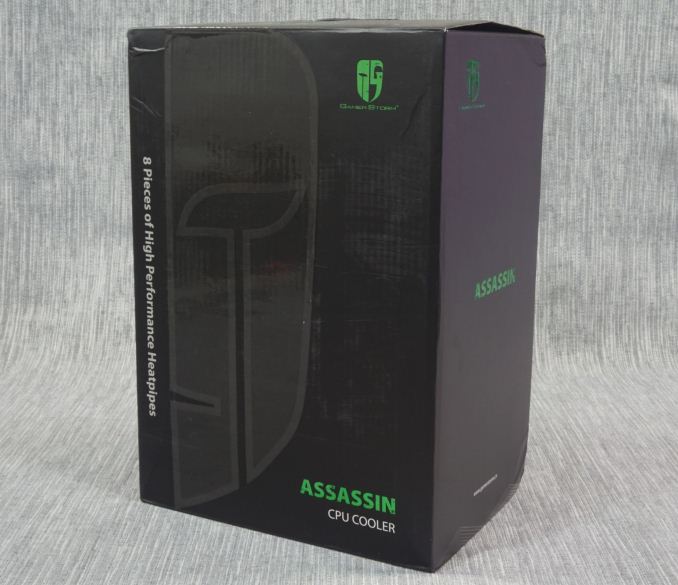
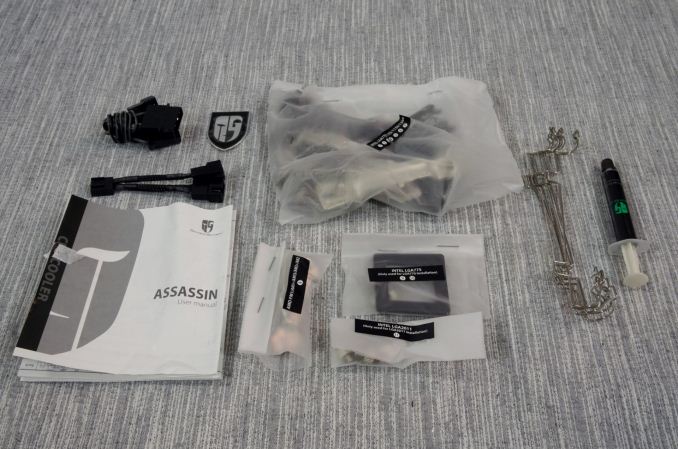
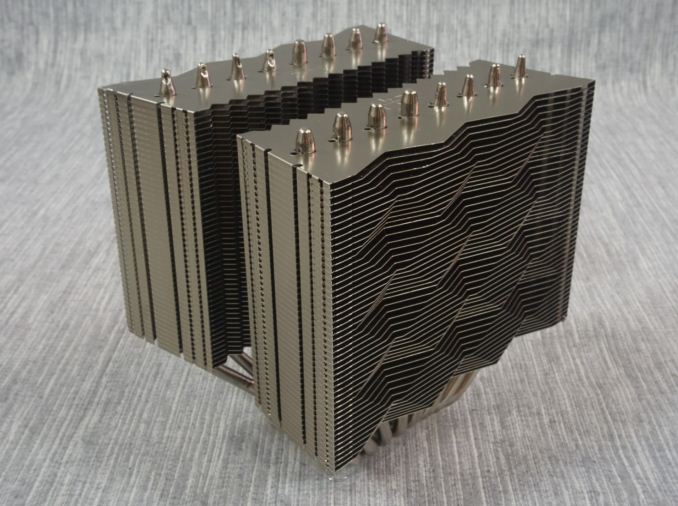
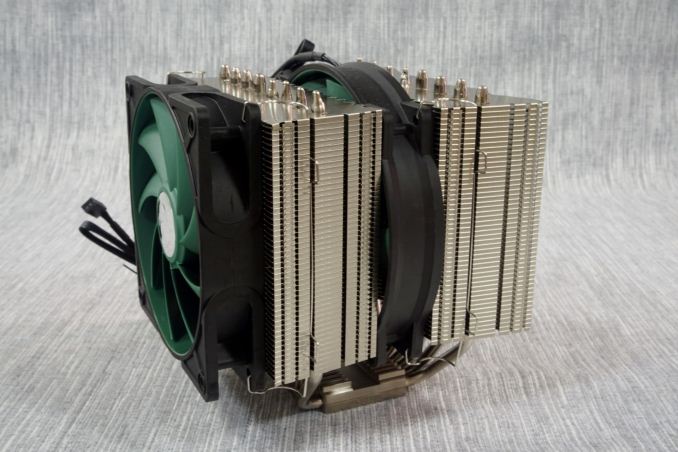
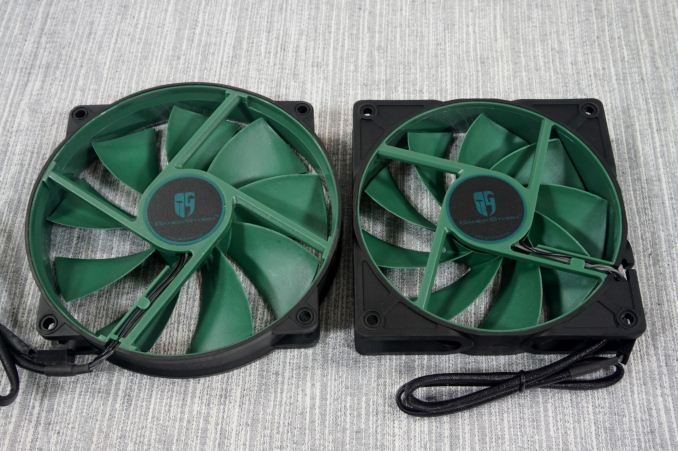









135 Comments
View All Comments
'nar - Tuesday, July 7, 2015 - link
I know right? I was so looking forward to a W/C vs A/C comparison after an intro like that.Margalus - Monday, July 6, 2015 - link
why didn't you test these all with the same fan? Then we could see how the cooler performed independent of the included fans? Like the Thermalright, it comes with no fan, apparently you got a super quiet slow fan and put on there, but that isn't fair to Thermalright saying they are hotter, when it could be because it doesn't have the amount of air moving over the fins as others.Beany2013 - Wednesday, July 8, 2015 - link
Thermalright provided the fan, so they can't grumble at the results.trandoanhung1991 - Monday, July 6, 2015 - link
When you talk about ultimate cooling, you should've at least tested the True Spirit 140 Power Edition with a TY-143 fan, or the Silver Arrow SB-E Extreme. Those are the most interesting products from Thermalright, not the Macho Zero.Maybe as an addendum at some point? I'm very interested to see how the Silver Arrow and the 140 PE fare against the D15.
Impulses - Tuesday, July 7, 2015 - link
Apparently the Macho is what TR themselves chose to send AT, if the intro is accurate... Big /facepalm on their part. They probably have some of the best value coolers in the TRUE Spirits (I have the original Cogage version myself), and the Silver Arrow might've ranked up there with the Noctua and Phantek. The article did make me pretty curious about the latter tho, call me vain but the color choices are cool.Calculatron - Monday, July 6, 2015 - link
Thanks for doing a heatsink round-up. They are refreshing to see these days.It is a shame that Thermalright did not send in its top-tier performer. Then again, the Macho Zero is nothing to sneeze at. ~40C over ambient for a 340 watt load is still a good result. (Perhaps, instead, they could have thrown the TY143 performance fan instead? Har!)
siberus - Tuesday, July 7, 2015 - link
I actually wish they would have sent 2 of the current fans so we could see if push/pull could push it up a performance bracket.rrohbeck - Tuesday, July 7, 2015 - link
I'd like to see the measurements all with the same fan(s) - whatever is considered "the best" fan. That would give an indication of how much you could get out of the cooler with aftermarket fans.'nar - Tuesday, July 7, 2015 - link
I wish there was more review cross-over with water coolers, these two camps seem to be at odds with each other. They never seem to be compared effectively to each other, so it is difficult for consumers to determine the "best" cooler for themselves. With Noctua getting up to $93, there are water coolers out there for less. I bought my Noctua NH-D14 for $75 and thought that was high for a HSF.I strictly used air coolers until I got an AMD APU, among them are several Noctua models. It was apparent to me that this CPU, after a bit of easy O/C, got hot much too fast for an air cooler to absorb. It would crash after just 4 seconds of starting Tomb Raider and the cooling fins were still ambient temperature. I tried three coolers including the Noctua NH-D14. Fan speed did not matter as the rapid increase in temperature exceeded the heatsinks' ability to draw the heat off the CPU itself. I would guess that it take anywhere from 30 seconds to a minute for the heat to actually get to the fins, so if your heat sink cannot "sink" the heat all by itself, no fan, for a full minute, then it has inadequate heat transfer and no fan will fix that.
I installed a Corsair H100i and that works very well. I had previously thought that any cooler with less surface area would have less cooling performance, but I have found that if you cannot transfer the heat to the fins, they make no difference. I think a Corsair H60 would have been fine now. I heard that water coolers were "better" and more efficient, but nobody ever explains WHY.
From this experience at least, it appears that water coolers have better heat transfer performance. Fan speeds and fins are secondary to that, as they do not matter until the heat gets to them. If they get hot, then low speed fans can easily remove that heat as higher temperature differentials generally allow for greater heat transfer. If you run high-power and high-heat for a long time, then higher fan speeds help.
How quickly can your test bench ramp up in power? Was that tested? Was that considered? CPU's can hit maximum power in nanoseconds, and crash in milliseconds. Only the base of the HSF would see anything from that event. I think this test is more academic, and not very relevant in the real-world with actual CPU's. It only tests for maximum heat generation over time, like when running benchmarks, not the dynamic nature in which CPU's operate for most useful loads. But then, that's just my perspective.
Pissedoffyouth - Tuesday, July 7, 2015 - link
I agree with you. I think the heat transfer through heatpipes takes quite some time to get to the fins